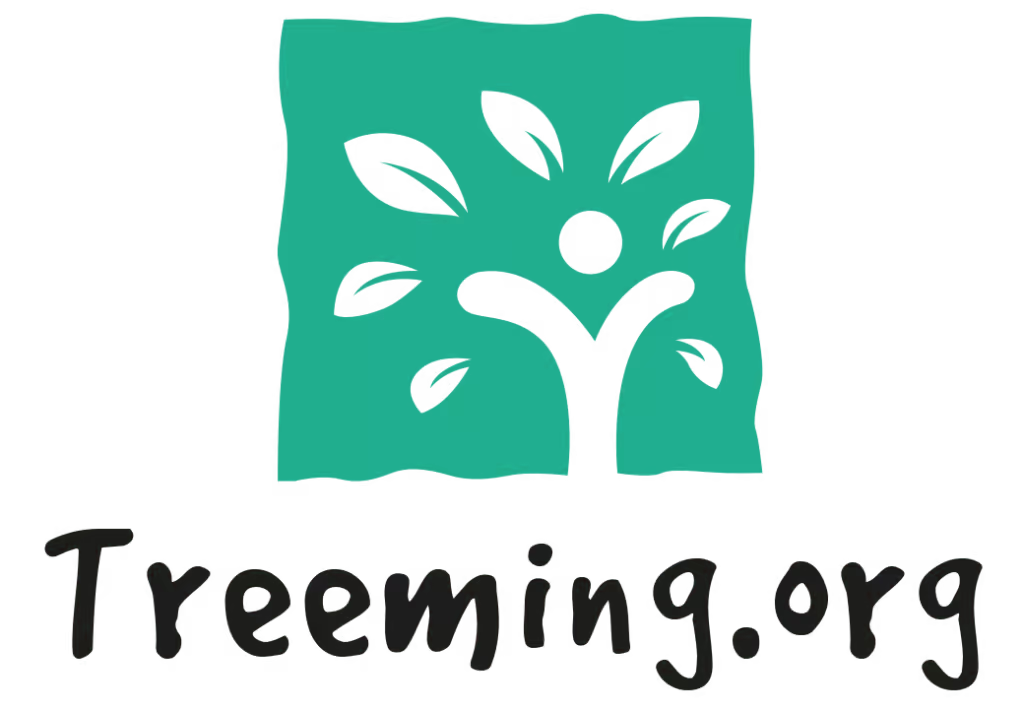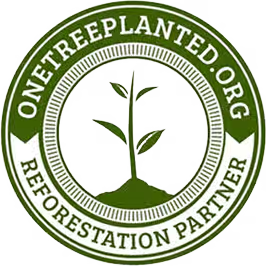Have you ever just stopped and listened to the sound of leaves rustling in the wind? Forest bathing, or Shinrin-Yoku, is all about that—immersing yourself in nature and soaking it all in. It’s not just a walk in the woods; it’s a way to heal and find peace, especially for those dealing with PTSD. And here’s something cool: moss and lichen play a big part in this healing process. They’re not just plants; they’re like nature’s little therapists.
Key Takeaways
- Forest bathing is a mindful practice that helps people connect with nature and find peace.
- Moss and lichen are important in forest therapy, acting as natural healers.
- This practice is especially beneficial for individuals recovering from PTSD.
- Nature immersion can lower stress levels and improve mental health.
- Creating a personal forest bathing routine can be a powerful tool for recovery.
Understanding Forest Bathing and Its Benefits
The Concept of Shinrin-Yoku
The term "Shinrin-Yoku," or forest bathing, comes from Japan and means immersing oneself in the forest atmosphere. This practice goes beyond just walking through the woods. It’s about being mindful and engaging all your senses—sight, sound, smell, touch, and even taste—to fully connect with nature. Forest bathing invites you to slow down and appreciate the small details around you. It’s not about hiking or exercise; it’s about being present and absorbing the natural environment.
Physiological Effects on the Body
Forest bathing has some pretty amazing effects on the body. Studies show that spending time in nature can lower stress hormone levels, reduce blood pressure, and even boost immune function. Imagine taking a leisurely walk in the woods and feeling your heart rate drop and your breathing slow. These physical changes can last for days, providing a sense of calm and well-being.
Psychological Benefits for Mental Health
The mental health benefits are just as impressive. Being in nature can improve mood, increase creativity, and help with problem-solving. For those dealing with PTSD or other trauma, nature-based activities like forest bathing can be particularly helpful. They offer a chance to step away from the stress of daily life and find peace. Forest therapy can also help with depression, anxiety, and ADHD, making it a powerful tool for improving mental well-being.
Forest bathing isn’t just a walk in the park; it’s a practice of mindfulness and presence that can transform your mental and physical health.
Moss and Lichen Wellness in Nature Therapy
The Role of Moss in Healing
Moss, with its soft and spongy texture, creates a calming atmosphere in nature therapy settings. Its ability to retain moisture and provide a cooling effect can enhance the sensory experience for participants. Moss not only adds aesthetic beauty but also contributes to the healing environment by reducing stress and promoting relaxation. Its presence in nature therapy can serve as a gentle reminder of the resilience and adaptability of life.
Lichen as a Bioindicator
Lichen plays a crucial role in ecosystems as a bioindicator, meaning it can signal the health of the environment. These unique organisms are sensitive to air quality and changes in their surroundings, making them valuable in assessing the ecological balance. By observing lichen, therapists and participants can gain insights into the environmental conditions, fostering a deeper connection with nature and an understanding of the impact of human activities.
Integrating Moss and Lichen into Forest Therapy
Incorporating moss and lichen into forest therapy sessions can enhance the therapeutic experience. Here are some ways to integrate these natural elements:
- Sensory Engagement: Encourage participants to touch and feel the different textures of moss and lichen, enhancing their sensory awareness.
- Mindful Observation: Invite participants to observe the variety of colors and shapes, promoting mindfulness and presence.
- Ecological Education: Use moss and lichen as tools to educate about ecological health and sustainability.
Immersing oneself in nature, especially in environments rich with moss and lichen, can lead to profound mental and emotional benefits. The simplicity and beauty of these organisms remind us of nature’s enduring wisdom and its capacity to heal.
Trauma-Informed Approaches in Forest Therapy
When considering forest therapy as a trauma-informed approach, it’s essential to understand the core principles that guide this practice. These principles emphasize safety, trust, and empowerment, which are crucial for individuals who have experienced trauma. The idea is to create a "safe container" where participants feel secure and supported. This involves non-coerciveness and offering choices, so participants can engage at their own pace. There’s no right or wrong way to experience forest therapy; it’s all about what feels safe and right for each person.
Guided vs. Self-Guided Experiences
In forest therapy, both guided and self-guided experiences have their place. Guided sessions, led by trained facilitators, provide a structured environment where individuals can feel more secure, knowing someone is there to support them. On the other hand, self-guided experiences offer more freedom and personal exploration, which can be empowering for some. The choice between the two often depends on personal preference and the individual’s comfort level with nature-based activities.
Building Trust and Safety in Nature
Building trust and safety is foundational in trauma-informed forest therapy. This involves creating an environment where participants feel respected and heard. Facilitators play a key role in this by maintaining a neutral, non-judgmental stance and encouraging open-ended participation. Over time, consistent engagement in forest therapy can deepen trust and strengthen the sense of safety, allowing participants to fully immerse themselves in the healing power of nature.
In the gentle embrace of the forest, individuals find a space to heal, where the rustling leaves and whispering winds offer solace and a chance to reconnect with themselves.
The Science Behind Nature’s Healing Power
Research on Forest Therapy Outcomes
Forest therapy, also known as "Shinrin-Yoku," is a practice with roots in Japan. It’s about soaking in the forest atmosphere and letting nature do its magic. Studies have shown that spending time in forests can have impressive health benefits. People often experience lower blood pressure and cortisol levels, which is the stress hormone. There’s also evidence that it can boost immune function and improve mood. For folks dealing with PTSD, nature can be a calming balm, reducing trauma responses and helping with cognitive function.
Impact on Stress and Anxiety Levels
When life gets overwhelming, a walk in the woods might be just what the doctor ordered. Forest therapy has been linked to reduced stress and anxiety. Participants in forest therapy sessions often report feeling more relaxed and less anxious. It seems that the natural environment helps to reset our mental state, providing a break from the constant stimuli of modern life. This natural therapy can be particularly beneficial for those with high-stress jobs or living in urban environments.
Long-Term Benefits of Nature Exposure
The benefits of forest therapy aren’t just short-lived. Regular exposure to nature can lead to long-term improvements in mental health. People who frequently engage in forest bathing often report sustained reductions in anxiety and depression. They also tend to have better sleep patterns and overall well-being. The peacefulness of the forest provides a sanctuary for healing and renewal, fostering a deeper connection with oneself and the environment.
Spending time in nature isn’t just a leisure activity; it’s a powerful tool for mental wellness. Embracing the forest’s embrace can lead to profound changes in how we handle stress and recover from trauma.
Creating a Forest Bathing Practice
Tips for Mindful Engagement
To truly get the most out of forest bathing, it’s important to engage mindfully. Here are some tips:
- Slow Down: Take your time to walk slowly and deliberately. Notice the ground beneath your feet and the rustling leaves above.
- Engage Your Senses: Focus on one sense at a time. Listen to the birds, feel the breeze, and smell the earth.
- Stay Present: Let go of distractions. Silence your phone and allow yourself to be fully immersed in the natural environment.
"When you let nature take the lead, you might find it easier to let go of stress and just be in the moment."
Choosing the Right Environment
Selecting the right spot for forest bathing can make a big difference. Ideally, look for:
- Quiet Areas: Find a place away from city noise and traffic.
- Varied Scenery: Choose a location with diverse flora and fauna to engage all your senses.
- Safety: Ensure the area is safe and accessible.
Incorporating Moss and Lichen
Moss and lichen can add a unique dimension to your forest bathing practice:
- Texture and Color: These elements provide rich textures and vibrant colors that can enhance your sensory experience.
- Air Quality: Lichen acts as a natural air purifier, indicating a healthy environment.
- Mindful Observation: Spend time observing these often-overlooked details of the forest. Their slow growth can teach patience and resilience.
Forest bathing, especially when guided by a certified expert, allows individuals to connect with the healing energy of nature, promoting well-being and relaxation.
Community Recovery Through Nature Immersion
Forest Therapy in Disaster Recovery
Forest therapy, often referred to as forest bathing, offers a unique approach to disaster recovery. After events like wildfires or floods, communities can feel fragmented and vulnerable. Forest therapy provides a soothing balm. It’s about reconnecting with the natural world in a way that promotes healing and resilience. Imagine walking through a forest, breathing in the fresh air, and feeling the earth beneath your feet. It’s a grounding experience that can help people process trauma and begin to heal. In areas affected by climate change, this method can help reduce eco-anxiety and re-establish a sense of place.
Building Resilience in Communities
Resilience isn’t just about bouncing back; it’s about adapting and growing in the face of adversity. Nature immersion programs can play a key role in building this resilience. They encourage community members to come together, share experiences, and support each other. Here are a few ways these programs can strengthen communities:
- Shared Experience: Participants can bond over shared experiences, creating a support network that extends beyond the therapy sessions.
- Skill Building: Learning about local flora and fauna can empower individuals and foster a sense of stewardship.
- Mental Health Support: Regular nature immersion can lower stress levels, reduce anxiety, and improve overall well-being.
Environmental Stewardship and Healing
Engaging with nature not only aids personal healing but also fosters a deeper appreciation for the environment. This appreciation can lead to increased environmental stewardship. As individuals heal, they often feel a stronger connection to the earth and a desire to protect it. This is crucial in areas recovering from environmental disasters. By participating in forest therapy, community members can become advocates for conservation and climate action. They learn to care for their surroundings, which in turn, nurtures their own healing process.
Forest therapy is more than just a walk in the woods; it’s a path to recovery and resilience. By immersing ourselves in nature, we find strength, healing, and a renewed sense of community.
Personal Stories of Transformation
Testimonials from Participants
In the heart of the forest, where towering trees create a canopy of tranquility, individuals find solace and healing. Participants of forest bathing sessions often share stories of profound change. One veteran, struggling with PTSD, found that the simple act of walking among the trees allowed him to breathe deeply and let go of the tension that had gripped him for years. "It’s like the forest wraps you in a blanket of calm," he shared, emphasizing the peace he felt during these walks.
Another participant, a young woman dealing with anxiety, described how the sensory experience of forest bathing helped her reconnect with herself. The rustle of leaves and the scent of pine became her anchors, grounding her in the present moment. She noted, "The forest doesn’t judge; it just is, and that acceptance was what I needed."
Case Studies on PTSD Recovery
Forest therapy has shown promising results for those dealing with PTSD. One case study highlights a group of wildfire survivors who participated in regular forest bathing sessions. Over time, these individuals reported a significant decrease in symptoms such as hyper-vigilance and intrusive thoughts. The natural setting provided a stark contrast to their experiences of trauma, offering a space where they could slowly rebuild their sense of safety.
Participants in these sessions often mentioned the importance of feeling supported by the forest and the group. The shared experience of walking through nature helped them forge connections, not just with the environment, but with each other. This sense of community was crucial in their healing journey.
The Journey of Reconnecting with Nature
Reconnecting with nature is a personal journey, one that varies greatly from person to person. For some, it begins with a hesitant step onto a forest path, unsure of what they might find. For others, it’s a return to a childhood joy, rediscovering the simple pleasures of being outside.
- Rediscovery of Joy: Many find a childlike wonder in nature, rekindling a long-lost joy.
- Mindful Awareness: Engaging all senses in the forest environment helps individuals stay present.
- Building Resilience: Overcoming fears and anxieties in a natural setting fosters a sense of strength.
In the quiet of the woods, where the only sounds are those of nature, many discover a part of themselves they thought was lost. The journey back to nature is not just a physical one, but a deeply emotional and spiritual reconnection.
Conclusion
In wrapping up, forest bathing seems like a pretty solid option for those dealing with PTSD. It’s not just about taking a stroll in the woods; it’s about really soaking in the whole experience—sights, sounds, smells, all of it. This practice gives folks a chance to step away from the hustle and bustle of everyday life and find some peace. Sure, it’s not a one-size-fits-all solution, but for many, it offers a way to reconnect with nature and themselves. Plus, it’s a low-cost, low-risk way to try something new. So, if you’re looking for a different approach to healing, why not give forest bathing a shot? It might just be the breath of fresh air you need.
Frequently Asked Questions
What is forest bathing?
Forest bathing, or shinrin-yoku, is a practice from Japan where you immerse yourself in a forest setting, using all your senses to connect with nature.
How does forest bathing help with PTSD?
Forest bathing can help people with PTSD by reducing stress and anxiety, improving mood, and providing a calming environment to heal.
Can children do forest bathing?
Yes, children can do forest bathing. It’s a fun way for them to explore nature and enjoy its calming effects.
Do I need a guide for forest bathing?
You don’t need a guide, but having one can enhance the experience by offering insights and structured activities.
Is forest bathing the same as hiking?
No, forest bathing is different from hiking. It’s more about slowly experiencing nature with your senses rather than covering a distance.
How often should I practice forest bathing?
You can practice forest bathing as often as you like, even just a few minutes can be beneficial. Regular practice can boost its positive effects.







